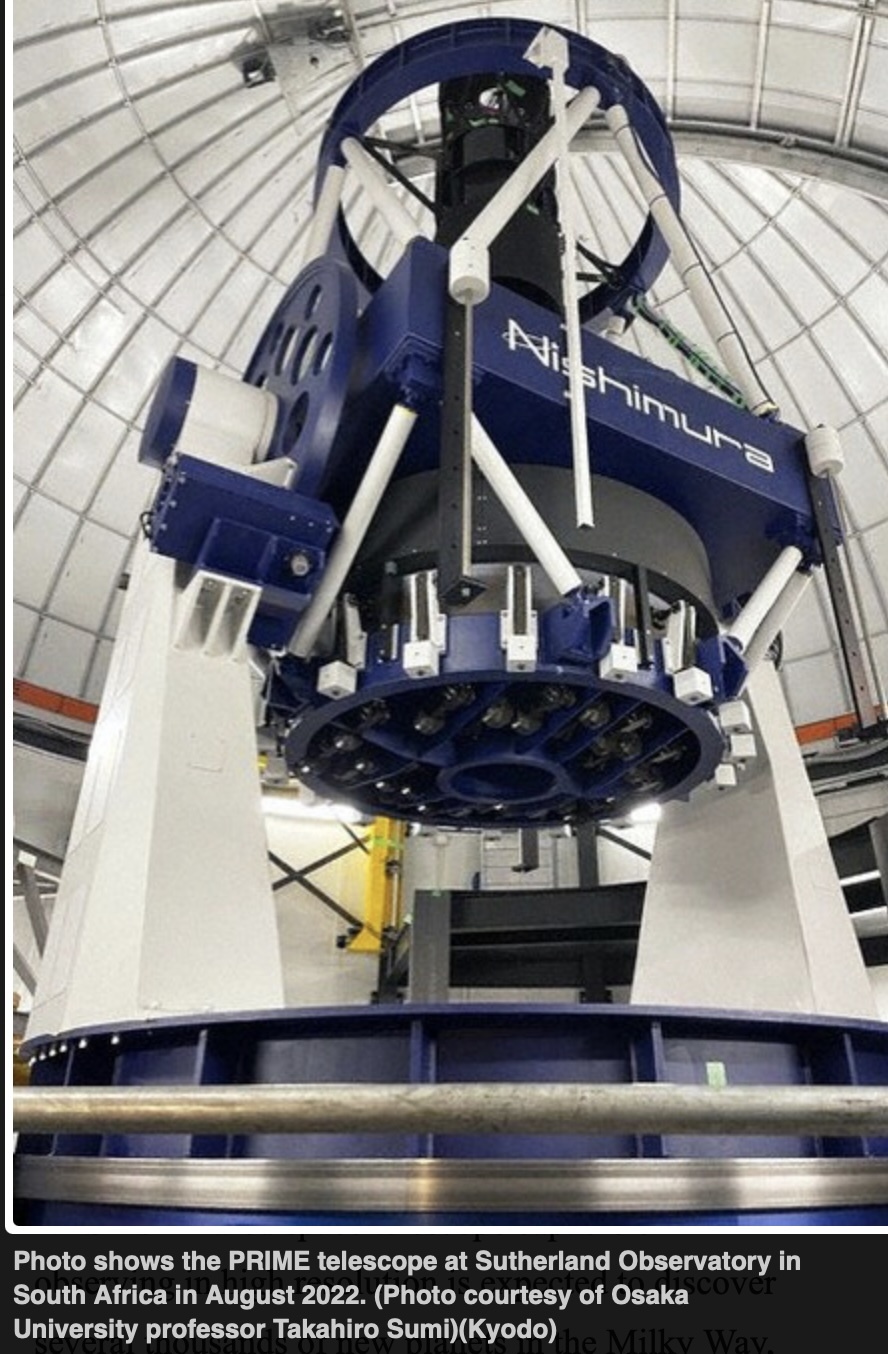14.04.2025

TOKYO (Kyodo) -- How common are solar systems like our own? Are Earth and our solar system "special?"
There are many planets in the universe orbiting stars like our sun, but the full picture remains a mystery.
The key to answering these questions and more lies in the search for exoplanets -- planets outside our solar system -- a search that will be accelerated by the scheduled launch of the Nancy Grace Roman Space Telescope in the fall of 2026.
NASA's infrared space telescope capable of observing in high resolution is expected to discover several thousands of new planets in the Milky Way, and Japan will join the project with support through the development of equipment and ground-based observations.
More than 5,800 exoplanets have been found since the first confirmation in 1995. The existence of the planets can be confirmed by detecting periodic dips in a star's brightness as a planet passes in front of it, among other methods.
Planets with temperatures, environments, and orbits vastly different from our solar system have been found, but they tend to be closer to their stars and tidally locked, meaning one side always faces their star -- as the Moon does with Earth.
The aim of the Roman telescope is to discover planets as far away from their stars as planets such as Jupiter and Saturn.
Developed by the National Aeronautics and Space Administration, it will avoid Earth's atmosphere, which disturbs the light coming from celestial bodies, by orbiting above it like other space-based telescopes, to allow for clearer, sharper images.
Named for Nancy Grace Roman, who served as NASA's first chief astronomer, it will be located approximately 1.5 million kilometers from Earth, orbiting the sun at the Sun-Earth L2 Lagrange point, a stable gravitational point in the direction opposite the sun.
The objective will be to search for exoplanets using "gravitational microlensing," in which a star with a planet in tow passes in front of a brighter background star, its gravity warping spacetime and causing the background star's light to bend and appear brighter and distorted, to reveal the planet's presence.
Since it is an extremely rare phenomenon, the telescope's focus will be on the center of our galaxy where many stars gather to increase the possibility of discovery. "We expect to find about 2,000 new planets," said professor Toru Yamada of JAXA, the Japan Aerospace Exploration Agency.
The Roman telescope's primary mirror that collects the light is 2.4 meters in diameter, and the range that can be observed at one time is 200 times that of the Hubble Space Telescope launched by NASA in 1990. In addition to searching for exoplanets, the telescope will also collect data to investigate the nature of "dark energy," the mysterious force that causes the expansion of the universe.
JAXA aims to contribute by lending its support through ground-based telescopes.
The PRIME telescope, operated by Osaka University and others in South Africa, which can potentially study the Milky Way's galactic center from the southern hemisphere, has one of the world's largest fields of view in the near-infrared range.
PRIME, which stands for Prime-focus Infrared Microlensing Experiment, can identify areas where gravitational microlensing is likely to occur in large numbers, leading to detailed observations of the Roman telescope as well.
Observations from two distant locations, one in space and the other on the ground, will enable calculations of exact distances and masses of the planets, making the "diversity" of planets visible.
Takahiro Sumi, a professor at Osaka University, said, "There have been few discoveries of lightweight planets far from their stars, but theoretically there should be many of them. We would like to verify this through observations."
Using an instrument called a coronagraph designed to block out the glare of starlight, much like in a solar eclipse, faint exoplanets can also be observed, allowing scientists to study these distant worlds in unprecedented detail. JAXA has developed an optical element that captures light 1 billion times fainter than a star.
Analyzing the wavelengths of the light will reveal the composition of the atmosphere covering planets. Signs of life activity, such as oxygen and ozone, may be visible.
The main purpose of this project is to verify the technology, and efforts to fully investigate the characteristics of individual exoplanets will be continued with the successor space telescope.
Quelle: The Mainichi
